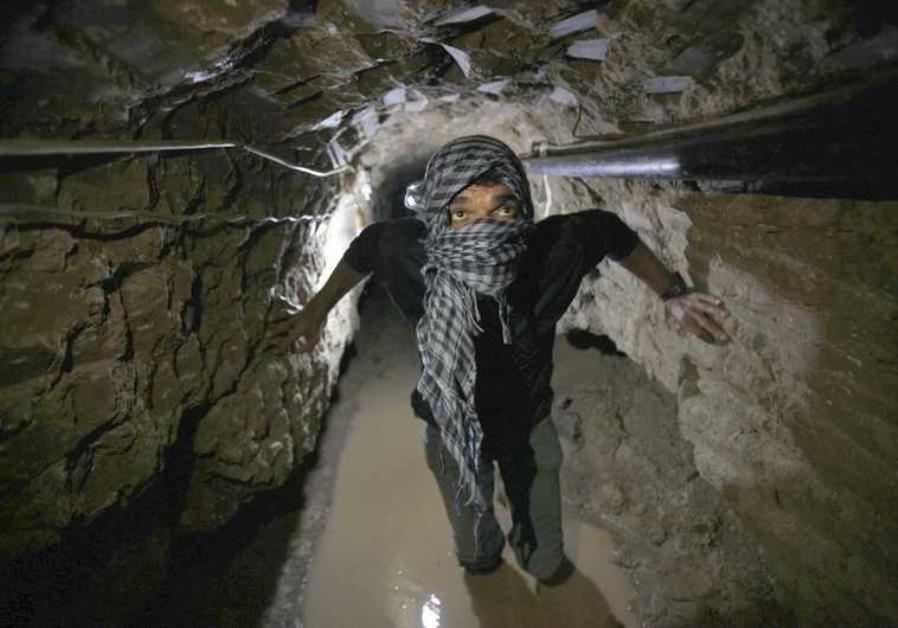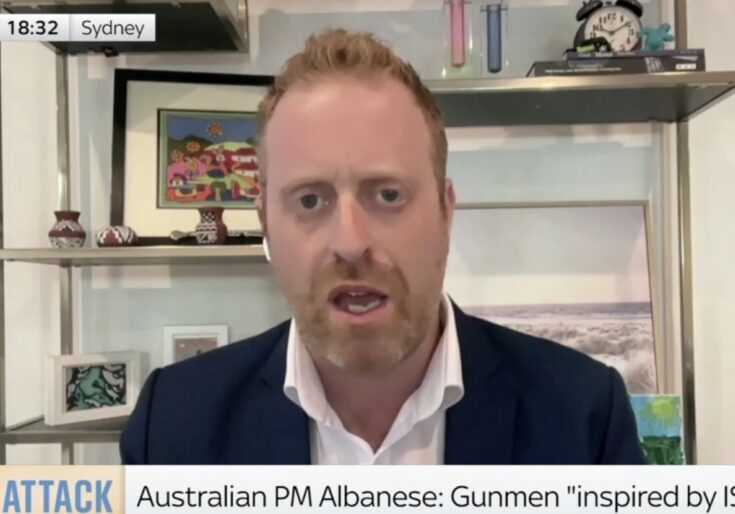FRESH AIR
The Other Tunnels: Hamas, Egypt and Islamic State in Sinai
August 10, 2018 | Oved Lobel

In the latest round of fighting between Israel and Hamas overnight which saw more than 170 rockets and mortars fired into Israel, Israeli forces struck around 140 targets in Gaza. Among them were “a factory where the terror groups constructs the concrete blocks it uses for attack tunnels and a fully operational tunnel opening near the Gaza coast belonging to Hamas’ naval commando unit,” according to the Times of Israel.
Israel has destroyed a number of such terror tunnels over the last two years, and while the problem is not solved, as Gabrielle Burack reported in the latest Australia/Israel Review edition, new Israeli technological solutions are expected to at least significantly reduce this threat.
Although not in the headlines quite as often as the “terror tunnels” Hamas and associated terrorist groups in the Gaza Strip construct into Israel to kill or kidnap soldiers and civilians, the subterranean tunnel economy between Gaza and the Sinai Peninsula in Egypt is just as important and just as dangerous.
According to one Palestinian interviewed by the Guardian, “if there were no tunnels, there would be such a heavy price that it would force Hamas to sit and find a solution” to the blockade. For all the Egyptian and Israeli efforts to destroy them, the tunnel business continues, although there are signs that Egyptian efforts are making a significant dent, albeit at a very high price to local residents.
Israel and Egypt imposed a blockade on the Gaza Strip in 2007 after the violent conquest by Hamas, which uncompromisingly advocates violence and the destruction of Israel. Hamas has partially offset this state of affairs by building thousands of tunnels that honeycomb the entirety of Gaza itself and extend hundreds of metres or even kilometres into both Israel and Egypt, forming a “tunnel village” for the transfer of every sort of good, from medicine, clothing, food, and fuel to cars, weapons, livestock, and even people.
These tunnels range in size and sophistication, from small and shallow dirt passages to massive and electrified corridors over sixty feet underground, some large enough to drive a truck through. Although certain tunnels are designated solely for military operations or smuggling certain goods, they are dual use, occasionally running into both Egypt and Israel and allegedly rivalling the Viet Cong’s Chu Chi tunnel network during the Vietnam War.
While Egypt never entirely turned a blind eye to the smuggling system – Hosni Mubarak, prior to being deposed in 2011, oversaw the construction, alongside the US military, of an underground barrier to choke off the smuggling tunnels into Sinai – it only began a coordinated campaign to destroy them in 2014. The 2012 election of the Muslim Brotherhood’s Mohamed Morsi in Egypt was a relative golden age for Hamas and Sinai-based militant groups, Hamas being an offshoot of the organisation. Even Morsi, however, attempted to shut down the tunnel system. Morsi’s rule came to a very quick end after a military coup overthrew him in mid-2013. The rise of the new ruler, Abdel Fattah el-Sisi, coincided with the launch of a brutal massive counterinsurgency campaign in the Sinai, which is focused as much below ground as above it. The regime also declared Hamas’ parent organisation a terrorist group, although Sisi and Hamas reestablished close working ties in 2017 to help Egypt crack down on Islamic State and other insurgent groups in Sinai.
Israeli Arab Affairs correspondent Avi Isscharoff reported in the Times of Israel recently:
Generations of Israeli combat troops who served in the southern Gaza Strip between the Israeli withdrawal from the Sinai Peninsula almost 40 years ago and the disengagement from Gaza in 2005 remember the homes of Egyptian Rafah, just over the border, on the other side of the Philadelphi Corridor. It was a city with thousands of houses and tens of thousands of residents — Bedouins, Egyptians, and Palestinians — many of whom were related to the families who lived in the nearby Palestinian Rafah inside the Strip.
But Egyptian Rafah is no more. The large city, which was considered the urban center of northeastern Sinai, has been wiped off the face of the earth as part of the Egyptian army’s campaign to remove inhabitants and homes from the Gaza Strip border area in order to prevent the smuggling of goods… it has succeeded in establishing a perimeter — an area free of homes and residents — consisting of a three-and-a-half-kilometer-wide strip along the entire border between Egypt and Hamas-run Gaza.
Despite being dangerous work, with the risk of natural cave-ins as well as Egyptian and Israeli military and engineering efforts to destroy them, tunnel digging is still a widespread profession, part of an entire “semi-official” economic system in Gaza. An unsophisticated tunnel can cost anywhere from $100,000-$300,000 to build, which their owners earn back very quickly. Workers used to be paid $120 daily on average, although increased pressure on Hamas by Egypt, Israel, and the Palestinian Authority has driven wages down to about $30. Owners of the land on which the tunnel is built are paid a 10% commission, while corrupt Egyptian security officials across the border are given handsome bribes to look the other way. One has to apply for a permit from Hamas to bring in smuggled goods via the tunnels, and “shipping rates” depend on the item and quantity. One tunnel co-owner who spoke to Reuters says he charges about $50 for a person to travel via the tunnels, although heavily armed men might have to pay over $1,000.
The precise nature of Hamas’ relationship with the Islamic State in Sinai is difficult to define, though IS moves men, equipment, and funds out of Gaza and sends wounded to be treated via the same tunnel network, and there are Israeli and Egyptian allegations of much closer ties. At the very least, there is a financial and transactional arrangement between the groups, despite technically being at war with one another in Syria and Gaza itself. IS has also demonstrated it is willing to blockade the tunnels against Hamas because of its collusion with Egypt, despite the tribal backlash in Sinai.
Both Egypt and Israel have reportedly been very successful in drastically reducing the amount and quality of tunnels, of which Palestinians say there are no longer enough to counteract the closing of the crossings. The workforce and pay have been substantially reduced relative to the heyday of the early 2000s, when around 22,000 Palestinians worked as diggers on over 2,500 tunnels. However, scores of tunnels are still being built or repaired every year despite Egyptian efforts. According to one worker, “We extended the tunnel by an average of 3 kilometers so it goes behind the Egyptian army’s focal points.”
If Hamas is ever going to be forced into a genuinely serious ceasefire, or better still, to relinquish its governance of Gaza to the Palestinian Authority, continuing and intensified efforts against these other tunnels – Hamas’ main source of revenue, weapons, and outside assistance – must be a key part of the strategic equation.
Tags: Egypt, Gaza, Hamas, Islamic State, Palestinians, Terrorism
RELATED ARTICLES

The Government’s actions still fall short: Joel Burnie on FDD Morning Brief

“The writing was on the wall for a number of years”: Colin Rubenstein on Channel 7 Weekend Sunrise





















